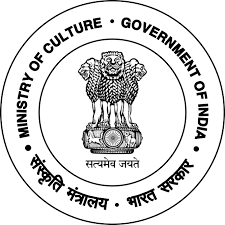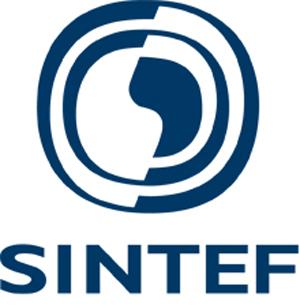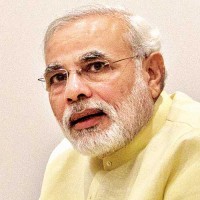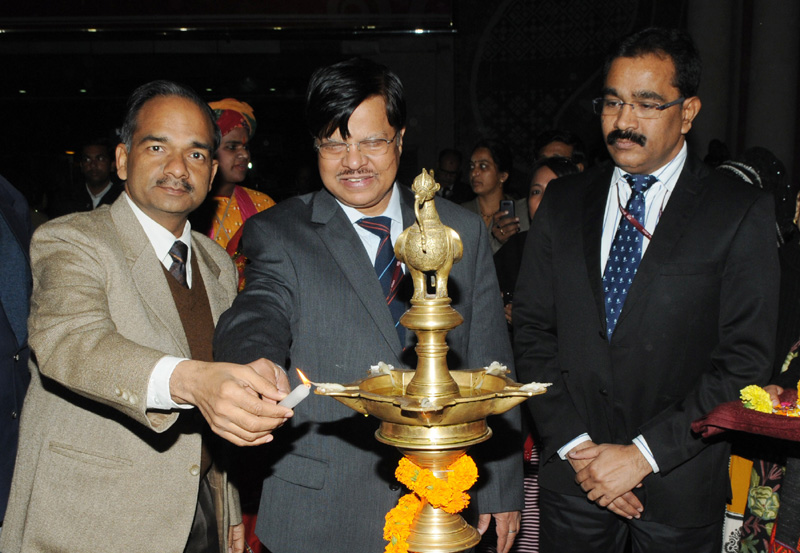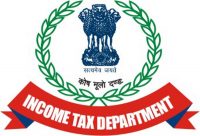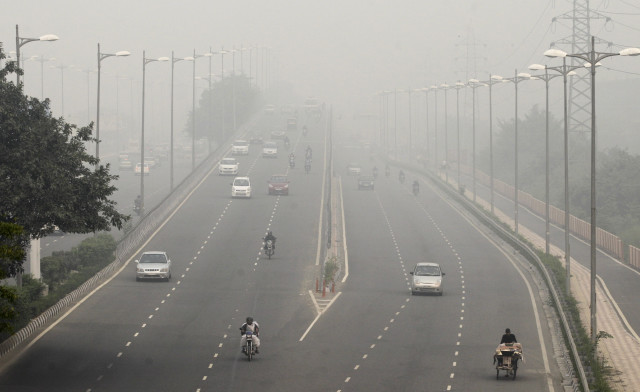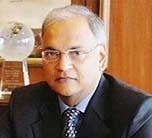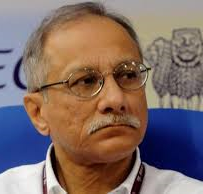Culture plays an important role in the development agenda of any nation. It represents a set of shared attitudes, values, goals and practices. Culture and creativity manifest themselves in almost all economic, social and other activities. A country as diverse as India is symbolized by the plurality of its culture. The mandate of the Ministry of Culture revolves around the functions like preservation and conservation of our cultural heritage and promotion of all forms of art and culture, both tangible and intangible. The Ministry’s task is to develop and sustain ways and means through which the creative and aesthetic sensibilities of the people remain active and dynamic. The functional spectrum of this Ministry is wide, ranging from generating cultural awareness at grassroots level to promoting cultural exchanges at international level. In order to achieve these objectives, the Ministry undertakes various activities that flow from subjects allocated under the Govt. of India’s Allocation of Business Rules.
E-TICKETING OF ALL TICKETED MONUMENTS:-
There are 116 ticketed monuments and 32 museums under the protection of ASI. E-ticketing facility has been launched in coordination with Canara Bank with the aim of providing online booking facility for visitors. Moreover, the facility is proving to be less expensive when compared to manual ticketing system which was prevalent earlier. Additional benefit will be in terms of relieving ASI personnel, mostly monument attendants, who will now be able to concentrate on the security and maintenance of monuments instead of dispensing and checking tickets.
As of now, online ticketing service has been initiated for all ticketed monuments. Process is underway to procure hardware to have computerized facility for the sale of e-tickets at the Point of Sale also. E-ticketing facility (online and at site) has already been started at several monuments in Agra and Delhi, that include Taj Mahal, Agra and Humayun’s Tomb, Safdarjung Tomb, Tughlakabad Fort, Old Fort (Purana Qila), Red Fort, Kotla Firozshah, Jantar Mantar, New Delhi.
3D PHOTOGRAPHY OF THE ARTEFACTS IN NATIONAL MUSEUM, NEW DELHI
National Museum has already digitized approximately 15,759 antiquities in 2D format and now with the new vision of the Ministry of Culture, a 3D digitization Pilot project has been initiated to take it to another level. This project once completed will be a pioneering effort in the field of museum experience. It has been taken up at the National Museum with a team of researchers and photographers from the Deccan College, Pune. For digitizing the objects in 3D format a standard procedure has been adopted.
For the digitization of one object after it is taken out form the reserve, it requires about 10-15 minutes for the photography of the object depending upon its size. Presently, 3D photography work is going on in 3 departments (i.e. Archaeology, Decorative Arts and Central Asian Antiquities) of the National Museum, New Delhi. Till 31st December, 2015 around 50 objects in 3D anaglyph shall be readily available.
These 3D images will give a rich experience to the public/viewers who would witness these images with high sense of virtual viewing of the object including its every detail in a credible manner. Such a project has been taken up in India for the first time by National Museum.
NATIONAL VIRTUAL LIBRARY OF INDIA:-
Under the aegis of the National Mission on Libraries, the National Virtual Library of India (NVLI) has been envisaged as the platform which would bring together all information generated in India and about India and make such information accessible to the citizens through user friendly search interfaces. A number of web based information services have been conceived to make best use of information technology. NVLI will provide a platform for users from all sectors to seek information through well researched services implemented through user-friendly interfaces.
Objectives:-
- Collect, collate and Disseminate information on all cultural objects, rare books /documents, orphan books, museum artifacts, manuscripts, archival documents, Audio-Visual collections of all MoC organizations, Heritage sites, tradition & customs, tourism . Provide access to everyone in an Open Access Environment.
- Content development – all existing digital resources to be identified and sourced.
- Organization of information resource base using standard tools and techniques.
- Plan, design and implement digital information services and searching.
- Facilitate Multilingual Information Resource collection.
- Implement robust and secure computing infrastructure.
- Provide usage and impact indicators through user, resources and service use statistics.
- Incorporate procedures for feedback and up gradation of the system.
Target Groups/Sectors:-
All sections of the Society including Scientists and Researchers , Students and Faculty, Children , Disadvantaged Groups , Skilled professionals , Industry &Business, Agricultural Sector and Farmers , Health Sector , Legal Sector , Tourism Sector.
COMPENDIUM OF ARTISTS AND ARTISANS & CULTURAL MAPPING OF INDIA IS IN PROGRESS
The mandate of Ministry of Culture to preserve, promote, explore and share India’s culture and heritage along with its ethos and values for the benefit of mankind. In pursuance of this vision, among others, Ministry of Culture has been administering a few finance-based schemes to identify, nurture hand-hold and train the upcoming and budding artistes on a sustained basis. This is carried out by way of grant of scholarships, fellowships, pensions, and other forms of grants/assistance. With a view to reach every nook and corner throughout the length and breadth of the country; there is a need to have data-base of such art forms and artists, which we refer to as cultural mapping”. This could consolidate the data at one place in a systematic manner and help us to streamline and rationalize various financial grant schemes being implemented by the Ministry for artists and cultural organizations, and ensure effectiveness, transparency and value for money.
In order to regulate these schemes and to carry out a survey on cultural topography of the country, project of Cultural Mapping of India under which data of artists shall be collected, has been initiated. In order to conceptualize the project, a number of meetings of experts has been held since 15th May, 2015. The work of entry of data of artists has been assigned to CCRT, New Delhi. Till date data on more than 55 lakhs artists has been collected. In order to collect the data of artists, Ministry is also taking the help of State Govt. and other organizations.
Under this scheme, a web portal would be developed through NIC for collection of data directly from artistes online for cultural mapping, which will serve as an artist repository and which can be used in future for the purpose of providing grant-in aid under various cultural schemes administered by this Ministry. In order to generate fund and to run the Mission, a draft mission document has been prepared by a sub-committee of Experts constituted for this purpose. Once the mission document of Cultural Mapping of India gets finalized, this will be sent for consultation to NITI Aayog and other Ministries.
NSD’S RE-DEVELOPMENT PROJECT – APPROVAL ACCORDED BY THE SFC
On the occasion of Golden Jubilee Celebrations in the year 2005, a Committee called Broad Based Committee (BBC) consisting of eminent theatre experts / practitioners/ educationists, administrators and faculty members, was constituted by the National School of Drama Society, a fully funded autonomous organization under Ministry of Culture, to devise NSD’s vision for 21st century.
The Committee, inter-alia, made various recommendations including Re-development Project to provide NSD a new campus. The proposed NSD’s Re-development Project was placed before the SFC, chaired by the Secretary, Ministry of Culture in its meeting held on 14-12-2015. The Committee after due discussions /deliberations approved the same at a cost of Rs.180 crores. This Project is likely to be accomplished in three years & nine months period.
CONSERVATION PORTAL FOR ASI WORKS:-
Portal for Conservation works is being launched by the Archaeological Survey of India (ASI) which aims to capture details of all conservation and development works being undertaken by its various circles. The portal has been developed to increase transparency and will be accessible to public as a part of e-governance initiative. The portal will have details of all works being undertaken by ASI through its various circles, viz., conservation programme, progress of work, attendance of workers, etc., including time line, which can be monitored at different levels. The portal is expected to be launched shortly.
EASE OF DOING BUSINESS – WEBSITE AND GAGAN BASED APP FOR NMA PERMISSIONS:-
The NOC online web Application and processing system (NOCAPS) provides a mechanism to obtain clearance from the National Monuments Authority (NMA) on the proposed sites of construction / re-construction which fall within the regulated limits of any centrally protected monument/sites without going through time consuming paper work.
In this process, Form-I has to be filled up by any individual applicant/firm/Govt. organization on the portal itself for obtaining the clearance from the National Monuments Authority on their proposed sites of construction/re-construction which falls within the regulated limits of any centrally protected monument/sites. The form requires the details of the proposed work with the enclosures viz. the building plans, maps, property papers etc.
Thereafter, Form-II has to be filled up by the concerned Competent Authority in respect of the applicant who has applied in Form-1 for NOC/clearance from National Monuments Authority. The basic details of this form contain the details of Form-1 as submitted by the individuals; this also includes several reports e.g. inspection report, Impact Assessment report etc. with the specific comments and recommendations of the Competent Authority. The Application is reviewed by the concerned Competent Authority (CA) and then forwarded to NMA for consideration. The recommendation of NMA will also be communicated online.
The Applicant can track the application online and view the status at various stages.
The online portal was launched on 29th September 2015 by Culture Minister.
Now, NMA is in the process of creating CA login and organizing training sessions for Competent Authorities to enable them to access the online portal.
GAGAN based App has been developed by ISRO in consultation with the Archaeological Survey of India which will enable the applicant to upload the location of the plot via-a-vis the monument/site through geo- coordinates in the ISRO BHUVAN map. It will shortly be integrated with the web portal of NMA.
SURVEY PLANS BY ASI THROUGH ISRO (GAGAN BASED APP):
- As per the Ancient Monuments and Archaeological Sites and Remains Act, 1958, survey plans are to be prepared for prohibited and regulated areas of all centrally protected monuments and sites. Under the Act an area up to 100 m from the protected limit has been declared as prohibited area and an area of 200m further beyond prohibited area, has been declared as regulated area.
- Parameters for preparation of survey plans are defined in the rules made under the Act. The job of preparation of survey plans has been assigned to the National Remote Sensing Agency/ISRO. For this purpose Archaeological Survey of India (ASI) has already been entered into an MOU with NRSA/ISRO. It has been estimated that the Survey maps indicating protected, prohibited and regulated areas of all centrally protected monuments would be completed within the span of one year.
- Once they are prepared, they will be shared with Ministry of Urban Development and also loaded on the web sites of MoC and ASI. It is also proposed that at a later stage the Protected/Prohibited/Regulated areas of all the 3686 monuments be incorporated in the Master Plans of the cities where monuments are located for effective implementation.
- As capacity building, four regional workshops were organized by ISRO Regional Centers to train Archaeologist and technical staff posted at various Circles. Further, a National Level Workshop was organized at New Delhi on 10.12.2015 involving Officers of MOC, ASI, ISRO and National Monuments Authority. The Survey map prepared so with the help of NRSA/ISRO shall be helpful for framing Heritage Bye-laws and in the process of grant of permission for construction related activities within prohibited and regulated areas near centrally protected monuments.
PHOTOGRAPHS OF ALL PROTECTED MONUMENTS
As a part of digitization efforts, and for online visitors to have a virtual experience of the monuments, a minimum of 10 number photographs per monument (for all 3686 protected monuments under ASI) covering different aspects and from different angles have been collected from all field offices. These photographs are being processed and will be published on ASI’s website shortly.
PORTAL ON MUST-SEE MONUMENTS AND ARCHAEOLOGICAL SITES OF INDIA
ASI is developing a portal for the “Must-see Monuments and Archaeological Sites of India”, under its protection. The purpose of creating the portal is to highlight outstanding monuments and sites in India, comprising world heritage properties, sites under UNESCO’s Tentative List, ASI’s ticketed and other non-ticketed prominent monuments. Nearly a hundred monuments have been identified for this purpose. Sites have been selected on the basis of their exceptional art and architecture, planning and design, displaying exemplary engineering skills and being a unique testimony to the civilization in the past.
The portal carries brief history regarding each monument and information such as connectivity and access, weather conditions, timings of opening and closing, facilities available at site, 360 Degree/panoramic views (in collaboration with Google) and other Must-See monuments in the vicinity. The portal is being with the hope that these will be visited by a large number of people from India and abroad, and will contribute to their visiting these outstanding sites.
Information for the portal including photographs has been collected from various field offices. The portal work is in progress and it is expected to launch it within a month.
RADIO FREQUENCY IDENTIFICATION (RFID) FOR ARTEFACTS IN MUSEUMS
Museums and Art Galleries, all small, medium and large, keep huge collections of objects, antiques and artworks. These collections always remain dynamic – they are constantly moved or checked for a variety of reasons e.g. display, conservation, photography, research, storage redevelopment, inventory, audits, maintenance etc.
Keeping track of the whereabouts of each and every item within the collection is a core function of every Museum and Gallery. Traditionally this has been done through manual record-keeping, updating ledgers or card files with new locations whenever something is moved. Typically stock verification is done once in 5 years in the manual system, which is highly inadequate from security of artefacts point of view.
RFID allows collections staff to track movement and take inventory of artifacts without physically handling them, thus greatly reducing damage to collection items and making it possible to do stock verification every week, which could be a trend setter in museum security. For example a hand-held reader could easily read 20 or more items stacked on top of each other in a storage drawer. Besides the reduced handling, the ability to scan multiple items also has a positive impact on staff productivity.The unique features of RFID technology (in particular that line of sight not required to read tags and that 100’s of tags can be read per second) enables Museums and Galleries to totally automate these processes.
A pilot project had been launched in National Museum, Delhi, with 211 passive RFID tags for object/artworks. On the success of the project, Ministry of Culture intends to replicate the project in other museums under the control of Ministry of Culture in 2016.
SWACHH BHARAT – SWACHH SMARAK
25 ADARSH SMARAK
- 25 ASI sites have been launched as “Adarsh Smarak” on 26th December, 2014 for providing improved visitor amenities, especially for the physically challenged, besides cleanliness, drinking water, and interpretation centres, audio-visual films etc. All the 25 monuments will be conserved on project mode basis. The civic amenities will be augmented at these sites. ASI has already concluded an MoU with ONGC for providing these amenities at Taj Mahal at an estimate of Rs.20.75 crore. Similar MoUs will be concluded for 5 more monuments. ASI also proposed to conclude MoU with BHEL and NBCC for providing such monuments with these facilities.
- Swachh Bharat mission has been launched in the Ministry of Culture on 25th September, 2014 with signing of an MoU between ASI, ONGC and Ministry of Tourism for constructing toilets and other facilities at Taj Mahal. Five more monuments have been covered under Clean India campaign.
- After detailed consultations, Archaeological Survey of India has finalized the National Conservation Policy, Excavation and Exploration Policy and guidelines on ASI Museums. The Village to Village Survey Scheme has been revived. The Aurangabad, Bangalore, Bhopal, Chandigarh, Chennai, Dehradun, Goa, Hyderabad, Kolkata, Lucknow, Patna, Ranchi, Shimla, Thrissur and Vadodara Circles surveyed 2087 villages, of which 727 yielded antiquaries/ remains/ ancient mounds/ structures etc.
- Vishnu Temple, Vishnugudi, District Wayanad, Kerala was declared as a monument of National Importance. The total number of centrally protected monuments in the country is now 3686.
FESTIVALS OF INDIA
- To promote India’s soft power and to further the MEAs focus on East Asia and South East Asia, several Festivals of India have been held at various geographical locations, in particular in the countries of Laos PDR, Thailand, Cambodia, Vietnam, China, South Africa, Indonesia and Seychelles and Japan. Festivals of India in Malaysia, South Korea, Mauritius and Madagascar are going on and Myanmar and Australia are in the offing. The running central theme of most of these festivals has been the core contribution of Buddhism and the bilateral relations.
- Indian Museum, Kolkata has organized an international exhibition titled “Indian Buddhist Art” at Shanghai and Tokyo. Most of these festivals have been spread over several weeks and have been organized in different cities. These festivals have been quite successful and have registered high footfalls as well as tremendous local media coverage and attention.
WORLD’S HERITAGE
- Rani ka Vav (Gujarat) and Great Himalayan National Park (H.P.) have been inscribed on World Heritage List during the 38th session of World Heritage Committee held from 15-25 June, 2014 at Doha, Qatar.
- The 9th session of the Intergovernmental Committee for the safeguarding of the Intangible Cultural Heritage was held at UNESCO headquarters, Paris. India’s nomination of “Traditional brass and copper craft of utensil making among the Thatheras of Jandiala Guru, Punjab, India was unanimously accepted for inscription on the Representative List of the Intangible Cultural Heritage of Humanity. India now has a total of 11 elements inscribed.
- Ministry of Culture participated in the III International Conference “Cultural Policy, Policy for Culture: the role of culture in ‘Sustainable Development in Post 2015 Agenda” with Framework of the 70thAnniversary of UNESCO held in Yerevan, Armenia from 10-14 July, 2015.
- India has been elected for the next four years (2014-18) to the Inter-Governmental Committee for the safeguarding of the Intangible Cultural Heritage in a vote on 4th June, 2014 at UNESCO headquarters, by the Central Assembly of the State Parties to the Convention for the safeguarding of the ICH. India won the election by a resounding 135 votes out of a total of 142 cast.
- India was also nominated as Vice Chair to the Committee for the Safeguarding of the Intangible Cultural Heritage for the period November 2014 to November 2015.
E – GOVERNANCE
- A new website of the Ministry of Culture and Mobile App has been launched. The Ministry is now on social media platforms.
- The links and their total number of followers/subscribers are as follows:
| S. No. |
Social Media Platform Link |
Total Followers/Subscribers |
| 1. |
Twitter: https://twitter.com/IndiaCulture.Goi |
6720 Followers |
| 2. |
Face book: https://www.facebook.com/indiaculture.goi |
9447 Likes |
| 3. |
You Tube: https://www.youtube.com/user/sanskritigoi |
153 Subscribers
8,000 Views |
(As on December 30, 2015)
SANSKRITI APP
Sanskriti is a Mobile App to view cultural events of India. The main categories of events that can be viewed are Music, Theatre, Dance, Exhibitions, Film Shows, Literature, Lectures and Programs for children. This Application provides updates on the Events organized under Ministry of Culture, Government of India. It gives the list of events and automatically detects current location of the mobile and the city is selected accordingly. User can also select city of his choice and see the listings. User can also search the events by Venue, Date or Location. There are 9 categories in the App i.e Music, Dance, Theatre, Exhibition, Film Shows, Children, Literature, Lectures and Others. There are number of sub categories in all categories.
M/O CULTURE’S GROUP ON MYGOV:
Group on MyGov web portal has been created in the name of Ministry of Culture to ensure citizens active partnership in nation-building through Tasks, Discussions, Polls, Blogs and Talks.
Currently, one discussion on the portal is ongoing (web link placed below) to invite suggestions and ideas for effective use of media in promoting Indian culture and heritage.
The administration and implementation of the various schemes run by the Ministry of Culture have been delegated to organizations under the charge of the Ministry in order to facilitate and speed up processing. All major schemes have been made online and application forms have been simplified. The system aims to ensure transparency and effective monitoring.
DIGITIZATION
- The digital collection of more than 52,289 images in respect of selected Museums, where Jatan software is being implemented in the first phase, has been transferred to the Digital Repository at C-DAC Pune and is available for public viewing on the web portal “museumsofindia.gov.in”. In addition, 12 virtual exhibitions have also been uploaded on this web portal for public viewing.
- National Mission on Monuments and Antiquities has uploaded about 3.15 lakh entries pertaining to documentation of Antiquities from various Museums/ Documentation Resource Centres (DRCs) across India on the NMMA website.
- Digitization of records and open access to archival resources has been taken up in a big way. National Archives of India has launched its online search portal “Abhilekh – Patal” on its 125th Foundation Day on 11th March, 2015. 2.3 million catalogue entries and 12000 digital images have been uploaded. About 15 lakh pages have already been digitized and more projects are underway.
- After the recent weeding out of the records by various Ministries, transfer of official records from Ministries to NAI has commenced. 2000 officials of various Ministries were trained on Records Management Practices by the National Archives of India (NAI).
GANDHI HERITAGE
- All components of Dandi project namely construction of National Dandi Memorial, development of Dandi Heritage Path from Ahmedabad to Dandi and development of 21 Night Halt places have been approved. Government of India has also accorded its approval for the construction of National Dandi Memorial at Dandi. Construction of the Heritage path has begun. Work relating to 21 night halt places is under progress.
- Gandhi Heritage Sites Mission has taken up several projects. These include upgradation and modernization of Gandhi Ashram Trust at Noakhali (Bangladesh); upgradation of the Gandhi Smarak Sangrahalaya, Barrackpore, Kolkata; curating exhibition of permanent nature at Pietermaritzburg Railway Station, South Africa and creation of data base relating to Gandhi Heritage Sites etc.
- Approximately 8,02,382 pages have been uploaded on Gandhi Heritage Portal.
- The Gandhi Peace Prize for the year 2014 was conferred on Indian Space Research Organization (ISRO) by the President of India on 9th September, 2015 in recognition of its outstanding contribution in use of space technology for the social, economic and political transformation of the nation through non-violence.
INTERNATIONAL CULTURE RELATIONSHIP
The SAARC Heads of Government met in Kathmandu and agreed for enhanced focus on cultural relations. The SAARC Culture Ministers met in Delhi and agreed on the SAARC agenda for Culture for 2014-17 in the form of Delhi Resolution. India hosted the SAARC Literary Festival on South Asian Poetry from 2-5 July, 2015 at Bengaluru.
- Programme of Cultural Cooperation between India and Uzbekistan for 2015-17 was signed.
- Cultural Agreement between India and Kyrgyz Republic was signed.
- Programme of Cultural Cooperation between India and Tajikistan for 2016-18 was signed.
- The 21st meeting of India-Russia Working Group on Culture and Tourism, co-chaired by Ministry of Culture, was held on 27-28 August, 2015 in Moscow.
- Programme of Cultural Cooperation between India and Bulgaria for 2015-2017 was signed on 4thSeptember, 2015.
OTHER ACHIEVEMENTS
- The inaugural function of two commemorations – Centenary Komagata Maru incident on 29thSeptember, 2014 and Birth Centenary of Begum Akhtar on 7th October, 2014 have been held. 125th Birth Centenary of Jawaharlal Nehru had also been inaugurated on 14th November, 2014. The Centenary is being celebrated with focus on Swachh Bharat and promotion of Scientific Temper. Some more commemorations had been approved for celebration in 2015 like that of Lala Lajpat Rai, Maharana Pratap, Rani Gaidinliu, Tatya Tope, Bhisham Sahni and 500 years of return of Chaitanya Mahaprabhu to Vrindavan. In addition, closing ceremony of 125th birth anniversary of Jawaharlal Nehru had also been held on 14.11.2015.
- The National Archives of India is celebrating its 125th Foundation Year in 2015-16. The inaugural ceremony was held on the Foundation Day on 11th March, 2015.
- Rs.200 crore has been released for the Statue of Unity – a statue of Sardar Vallabh Bhai Patel.
- Many educational institutions have been chosen in Varanasi for development as Interpretation Centres based on famous luminaries and important themes regarding the city. Work in this direction is in progress.
- Annual conference of CIDOC, the International Committee for Documentation ICOM, took place from 7th to 9th of September, 2015 at the National Museum Institute.
THE EYE AND THE MIND: NEW INTERVENTIONS IN INDIAN ART’ A TRAVELLING EXHIBITION ORGANISED BY NATIONAL GALLERY OF MODERN ARTS IN THREE MAJOR MUSEUM IN CHINA
National Gallery of Modern Arts organized a travelling exhibition entitled ‘The Eye and The Mind: New Interventions in Indian Art’ at three major museums in China. The exhibition at Guangdong Museum of Art, Guangzhou, China from 8th January 2015 to 3rd February 2015 saw a footfall of 45,368, at China Art Museum, Shanghai from 10th April 2015 to 12th August 2015, the exhibition saw a footfall of 11, 04,281 and at Minsheng Art Museum , Beijing, China from 23rd October to 21st December 2015.
A total of 39 artworks were presented by 24 artists in this exhibition. This exhibition presented thought- provoking and cutting- edgeworks of art by well known artists such as Anju Dodiya, Arunkumar HG, Atul Bhalla, Baiju Parthan, Bharti Kher, Chintan Upadhyay, G.R. Iranna, Hema Upadhyay, Jittish Kallat, Ranbir Kaleka , Ravi Agarwal, Reena Kallat, Manisha Parekh, M Kamath, Mithu Sen, N.S. Harsha, Pooja Iranna, Rekha Rodwittiya, Riyas Komu, Sachin Karne, Sheeba Chhachi, Surendran Nair, Tushar Joag and Veer Munshi. These are essentially artists who have emerged in the 1980s, 1990s in India presenting their own practice by portraying the reality that they have experienced and depicting strongly their concerns as individuals. As the focus of world economies shifts towards Asia, most notably China and India, it would be interesting to observe how Indian artists respond to being placed in the global spotlight.
M/o CULTURE CELEBRATED 125TH ANNIVERSARY OF THE NATIONAL ARCHIVES OF INDIA THIS YEAR
‘Abhilekh Patal’- Portal for Access to Archives and Learning is an initiative of National Archives of India to make its rich treasure of Indian Archival Records available to one and all at the click of a button which was launched by the Minister of Culture, Dr. Mahesh Sharma on the occasion of 125th foundation year celebration on 11th March 2015.A new logo of the National Archives of India was launched by the Minister of Culture on this occasion. An exhibition entitled Treasures of National Archives of India was also organised in the National Archives Museum premises which was open for public till 10 April 2015.During the yearlong celebrations, the National Archives of India planned to release a series of publications, launched the renovated National Archives Museum, organised archival exhibitions to raise the archival awareness amongst masses, arranged workshops and seminars for the professionals to highlight the role of Archives in Society as well as in the administration.
M/o CULTURE CELEBRATED THE BIRTH CENTENARY OF LEGENDARY FREEDOM FIGHTER RANI GAIDINLIU
Prime Minister Shri Narendra Modi inaugurated the celebrations of “Birth Centenary of Legendary Freedom Fighter Rani Gaidinliu” at Vigyan Bhawan on August 24, 2015. The Prime Minister also issued a commemorative coin of hundred rupees and circulation coin of five rupees on Rani Gaidinliu. Referring to her as ‘Rani-maa’, the Prime Minister said it is our misfortune that people such as Rani Gaidinliu have either not been remembered adequately, or have been deliberately forgotten. He emphasized that India must remember the glorious heritage of the freedom struggle, and ensure that the legacy of the struggles and achievements of our freedom fighters is passed on to succeeding generations.
INDIRA GANDHI RASHTRIYA MANAV SANGRAHALAYA, BHOPAL AWARDED WITH RAJBHASHA KIRTI AWARD BY THE PRESIDENT OF INDIA
In a gracious ceremony held on 14th September, 2015 in the Vigyan Bhawan, New Delhi. The President of India, Shri Pranab Mukherjee presented the 3rd prize Rajbhasha Kirti Award to the Director of Indira Gandhi Rashtriya Manav Sangrahalaya, Prof. Sarit Chaudhuri. This prestigious award was given to IGRMS in the category of Boards and Autonomous Institutions. The President congratulated the award winners for their commendable work and urged everyone to come together to propagate the use of Hindi. It is worth mentioning that the Sangrahalaya had earlier received Índira Gandhi Rajbhasha’ Award for the implementation of Rajbhasha Policy in the same category during the years 2009-10, 2011-12 and 2013-14.
NATIONAL COUNCIL OF SCIENCE MUSEUMS (NCSM) CELEBRATES “GOLDEN JUBILEE OF MOBILE SCIENCE EXHIBITION (MSE) PROGRAM”
National Council of Science Museums (NCSM) under Ministry of Culture celebrated “Golden Jubilee of Mobile Science Exhibition (MSE) Program” at Science City, Kolkata from 17th – 19th November 2015. This flagship program started as Mobile Science Museum (MSM) in 1965 with a motto: “If the people do not visit the museum, let the museum visit the people at their doorstep.” First MSE (then MSM), on the theme ‘Our Familiar Electricity’ was inaugurated by Shri Praffula Chandra Sen, then Chief Minister of West Bengal at Ram Krishna Mission School, Narendrapur on 17th November 1965. However, the first MSE Bus was flagged off in 1966 from Birla Industrial and Technological Museum, Kolkata. Since, then the MSE buses have travelled a distance of 14,88,297 km and have been visited by more than 6,45,19,367 people so far. This has made MSE the largest and longest running non-formal science education programme in the country.
MSE program is an attempt of NCSM to communicate science and technology in the rural India. At present, 23 MSE buses attached with different Science centres of NCSM spread across India, travel to unreach rural part of India and help develop scientific temper in the society. Besides exhibits, there are programmes like, Taramandal Show, Science show, Open house quizzes, sky observation programmes, film shows and science demonstrations to enrich the minds of students and the general public.
A workshop on various themes like ‘Challenges in conducting MSE Program’, Relevance of MSE program in current scenario’, Future model of MSE and add-on activities has also been organised from 17th – 19thNovember 2015. NCSM officials which included Education Officers, Technician, Drivers etc. associated with MSE programs were felicitated on the occasion.
‘RASHTRIYA SANSKRITI MAHOTSAV’ ORGANIZED BY M/O CULTURE
Ministry of Culture organized the most diverse and first of its kind National Cultural Festival of India- ‘Rashtriya Sanskriti Mahotsav’ at IGNCA, Janpath, New Delhi. The 8 day long Festival was inaugurated on November 1, 2015. The festival saw a cultural extravaganza including hours of daily cultural performances from 10 AM to 6:30 PM at the Aangans and from 6:30 PM to 9:30 PM at the Main Stage. The events presented a cultural confluence with 150 Art forms, performances by more than 1500 Artists; 32 forms of Paintings, Visual arts, 400 Master Craftsmen; Cuisine by traditional Master Chefs. The 8 days festival witnessed live performances by a number of renowned Indian artists like Gurdas Maan, Sharda Sinha, Sandeep Mahavir, Roopkumar Rathod & Sunali Rathod, Malini Awasthi and Taufiq Qureshi. The closing ceremony also witnessed a soulful performance by renowned Sufi singers – the Wadali Brother’s.
7 Aangans by the Zonal Cultural Centres (ZCC’s) offered the visitors a range of artifacts, handicrafts like Haveli paintings from Punjab, Rogan artworks from Gujarat, Banaras silk, Kalamkari (hand-painted or block-printed cotton textile), Tanjore paintings and many more. Starting from Bihu of Assam, Aji Lamhu from Arunachal Pradesh, Sarlamkai from Mizoram, Wangala of Meghalaya, Dang of Gujarat, Dhekni or Ghode Modni from Goa, Dummy Horse & Nyandimelam from Tamilnadu, Panthi Dance from Chhatisgarh and much more, the festival witnessed high energy & intensity filled performances by a number of Maidani Kalakar and artists from 7 Zonal Cultural Centres (ZCCs) including Patiala, Udaipur, Thanjavur, Kolkata, Nagpur, Dimapur and Allahabad.
The Food Court at the festival offered the visitors a range of traditional Indian dishes from different parts of the country including Kheema ki Lukhmi, Dum ka Chicken and Dum ki Biryani from Hyderabad, Nargisi Kofta, Murgh Yakhni, Rista and Gostaba from Kashmir, Thaalipeeth, Misal Pav, Batata Wada and Masala Bhaat from Maharashtra, Patthar ka Ghost – Spicy Mutton cooked on a thick stone slab from Telangana and more such dishes like Matka Roti, Vegetarian Marwari Platter, etc.
Activities for school children including Poster making competition, Cultural Attire- fancy dress competition, face painting, folk performances (Singing/Dancing/Instrumental) and on the spot photography competition along with various workshops including Origami, Block Printing, Puppetry, Mask Making and Pottery/ Clay Modeling were also the part of the festival.
VICTORIA MEMORIAL HALL WAS AWARDED AS THE CLEANEST MONUMENT IN THE ‘SAFAIGIRI SUMMIT AND AWARD – 2015’
Victoria Memorial Hall, Kolkata has been awarded the “Cleanest Monument in Safaigiri Summit” organized by India Today. A team of 19 gardeners, seven sweepers and four casual labourers maintain the entire 57- acre property. It’s Secretary Mr. Jayanta Sengupta says that the museum is a no- plastic zone and about 250 trashcans, all evenly spaced have been kept to avoid littering. The monument gets a steady stream of morning walkers picnic crowds throughout the day, and visitor who drop in for exhibition or events such as the Kolkata Literary Meet. “If you visit during the winters, you will just see a sea of people on the premises. School children are given free entry. “he says. Sengupta and his team are planning another block of toilets and a massive cleaning and renovation drive to enhance and preserve its aesthetic appeal.
13TH WORLD ROBOT OLYMPIAD’ WILL BE HELD IN DELHI DURING NOVEMBER, 2016
First time in the history of World Robot Olympiad, Indian students won three medals (1Gold & 2 Silver) and one position (Eighth) in the WRO-2015. The theme of this year’s World Robot Olympiad was ‘Robot Explorers’. Students representing more than 55 countries participated in the event. The winner students shared their experiences with the Minister. The Minister interacted with the winners and wished them grand success in the forthcoming events.‘13th World Robot Olympiad’ will be held in Delhi during November, 2016 for the first time. It will be organized by National Council of Science Museums (NCSM) with India STEM Foundation (ISF). Team India Storm Divers and India Thunder Divers from Ahmadabad won 1st and 2nd rank respectively in Elementary category and Team India Shadow Bots and Path Finders from Delhi won 2nd and 8th rank respectively in Open category. To showcase their talent and creativity teams from over 225 different schools across India participated in this event.
DANDI SALT SATYAGRAHA MEMORIAL PROJECT
A memorial to mark the historic Dandi March led by Gandhiji in 1930, is proposed to be built at a 15 acre plot in Dandi, Gujarat, at the site where Gandhiji and his fellow marchers picked up salt from the sea beach to break the salt law of then British India. The Dandi Salt Satyagraha Memorial is conceived as an experiential journey recreating the spirit and the energy of the Dandi March, taking visitors step -by-step to understand the Dandi March story and the methodology of Satyagraha – the non-violent movement – which finally led to India’s freedom from British colonial rule.
A statue of Gandhiji inside a pyramid of light, followed by a cluster of life-size stoneware sculptures of the group of the 80 fellow marchers will be the main memorial. It is proposed to create a pathway towards the main memorial which will replicate the Dandi March route, through 24 spaces representing the 24 halts. Each space will have a panel carrying a visual depiction of the main events which occurred during the day’s journey to the halt, through bas-relief sculptural narratives in stoneware.
The proposed design for the memorial was formulated by a National Design Team which included artists and professionals from leading design schools from India, under the aegis of a High Level Dandi Memorial Committee constituted by the Ministry of Culture, Government of India. The project of creating the memorial is envisaged to be a participatory one where the creative minds of the nation and the world come together to recreate and remember an event that changed the political destiny of the nation.
FESTIVALS OF INDIA ABROAD- 2015
SAHABAT INDIA- THE FESTIVAL OF INDIA IN INDONESIA 2015 IN YOGYAKARTA
The Festival of India was inaugurated on 13 March at Prambanan Temple Complex, Yogjakarta by Mr. Sripaduka Paku Alam IX, Vice-Governor of Yogjakarta, Mr. Gurjit Singh, Ambassador of India to Indonesia & Timor Leste and Ms. Lailly Prihatiningtyas, President Director, PT TWC. Indian artists from Charkula Art Academy, Mathura (India) performed the traditional folk dance on the theme of “Krishna and Radha”, while the Indonesian artists performed the Ramayana ballet, which was enacted in Ramayana International Festival in India in February 2015.
FESTIVAL OF INDIA IN MAURITIUS 2015
This Festival was organised by the High Commission of India with the support of Ministry of Culture, Government of India, and in collaboration with Ministry of Arts and Culture, Government of Mauritius. It was launched at a gala inaugural ceremony on Friday 21 August 2015 at the Indira Gandhi Centre for Indian Culture, Phoenix. The Festival was inaugurated by Lady Sarojni Jugnauth, in the presence of the Hon. Santaram Baboo, Minister of Arts and Culture, and the Chief Guest from India, Minister of State (IC) for Culture, Tourism and Civil Aviation of India, Dr Mahesh Sharma, who visited Mauritius from 21‐22 August 2015 specially for the event. Two very special inaugural performances kicked off the Festival of India following the lighting of the ceremonial lamp and presentation of the Festival logo to the dignitaries ‐ a Ramlila presentation by the famous Shri Ram Bharatiya Kala Kendra, Delhi and ‘Nrityarupa’, a composite presentation of classical dance forms conceptualised by the prestigious Sangeet Natak Akademi. The Festival of India in Mauritius, which continued till 1 November 2015, comprised a series of presentations of Indian performing arts by renowned artistes, including classical and folk dances & music, theatre, and even traditional puppetry. The Festival also included exhibitions on various cultural and educational themes, literary conferences and seminars, and film/documentary screenings. Besides showcasing Indian artists and performers, the Festival also presented artistic collaborations with Mauritian artists and organizations.
The 3rd World Urdu Conference was also organized under the umbrella of Festival of India in Mauritius. A seven member strong delegation of Urdu Scholars/poets from the Sahitya Akademi took part in the Conference. The deliberations were followed by a cultural performance- Mehfil-e-Qawwali on 28th November, 2015.
FESTIVAL OF INDIA IN REPUBLIC OF KOREA 2015
The Festival of India was inaugurated in Seoul at the Millennium Hilton on the evening of Monday, November 9, 2015. A 20‐minute performance by the Drums of India group sponsored by the Ministry of Culture and a sponsor‐supported Indian food festival was held at the inaugural event. 180 specially invited influential guests included senior corporate figures from Korea, cultural figures (noted Korean author and long ‐standing friend of India, Ryu Shihwa and academics, cultural event managers, and some of Korea’s most famous TV, theatre and pop music stars, Government officials, Korean media (English and Korean language), diplomats and Indian community. The second performance in Seoul at Lotte Culture Hall, Yeongdongpo was held on Tuesday, November 10, 2015 where Drums of India troupe followed by an Odissi Dance Troupe, arranged separately by the Mission performed in front of 150 persons. The Drums of India Troup performed at the inauguration of India’s first Cultural Centre in Busan on November 11, 2015 – India’s Cultural Centre is the first standalone Cultural Centre in Korea’s largest city. The performance had an audience of around 300 persons including members of the local Consular Corps, officials of the City of Busan including the military garrison, the President and Vice President of the Tongmyong University, leading India‐scholars, and business representatives.
FESTIVAL OF INDIA IN SRI LANKA 2015
The Ministry of Culture in collaboration with the High Commission of India in Sri Lanka organized the Festival of India in Sri Lanka from the 19th November 2015.The High Commission of India in Sri Lanka launched ‘SANGAM’ – the Logo for the Festival of India in Sri Lanka on 18 November 2015 in Colombo.
The inaugural event of the Festival ‘Nrityarupa’ was organised at the most iconic venue in Colombo – the famed Neelum Pokuna Theatre, on 19 November 2015. Former President of Sri Lanka Chandrika Bandaranaike Kumaratunga was the chief guest at the inaugural event. A number of Ministers of Sri Lanka and members of the Diplomatic community were also present on the occasion. Given below is the Rangoli in the foyer of the Nelum Pakuna Mahinda Rajapaksa Theatre at the Festival of India in Sri Lanka.
FESTIVAL OF INDIA IN MONGOLIA- 2015
The Festival of India in Mongolia was inaugurated in the Central Cultural Palace in Ulaanbaatar, capital of Mongolia on 7th November, 2015 coinciding with celebration of the 60th anniversary of establishment of diplomatic relations with Mongolia. The main event of the inauguration was “Drums of India” performed by a troupe of percussion artists from different parts of India. MP Mr D Demberel, former Speaker and currently Head of the Parliamentary Group on India in the State Great Hural (National Parliament) was the chief guest during the inaugural event. Others who attended the inaugural ceremony were present and former political figures, ambassadors and representative of foreign missions, senior government officials from Ministry of Education and Culture, Foreign Office and other departments, large number of students, monks from monasteries, art and yoga enthusiasts etc. The function was very well attended and enjoyed with enthusiasm. The event received wide coverage in print and electronic media.
FESTIVAL OF INDIA IN MADAGASCAR
The Festival of India was opened at Hotel Ibis in Antananarivo, Madagascar on 9 November. Around 300 invitees including high ranking officials in the local Govt, members of the Diplomatic Corps, members of the India Diaspora and persons of Malagasy and other nationalities attended the opening ceremony. The festival is being organised by the Embassy of India in Antananarivo with support of Ministry of Culture, Ministry of Tourism & Indian Tourism Development Corporation (ITDC). The Festival continued till 15 November, 2015.



